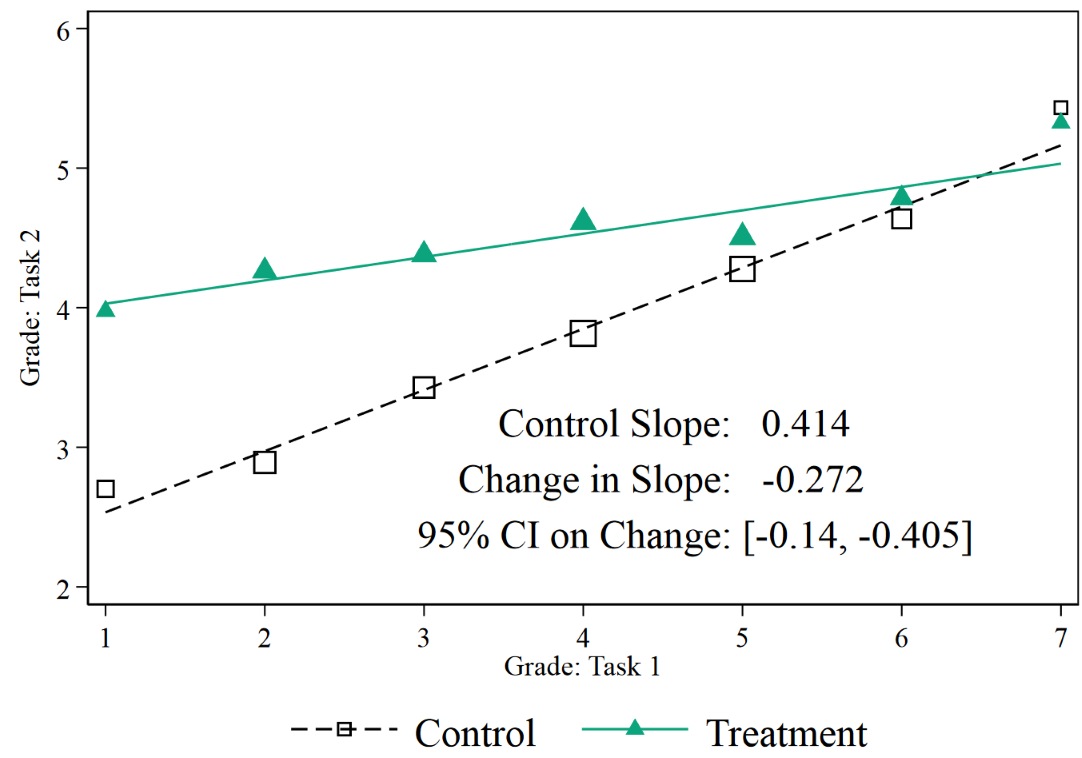Building Trust in Agentic Commerce
Oct 6, 2025
AI agents are moving to the core of digital commerce. Agentic commerce is an emerging transaction space where autonomous AI systems independently conduct purchases on behalf of users. The rise of these agents represents the most significant shift in digital commerce since mobile, with mainstream adoption accelerating through services like ChatGPT enabling in-chat purchases.
What Is Agentic Commerce?
When I talk about agentic commerce, I mean AI-driven agents that can discover products, make recommendations, and complete transactions automatically on behalf of customers. In practical terms, this means consumers may delegate shopping tasks to AI assistants, such as asking an agent to find the best price and order a product.
Why Now Is the Time for Agentic Commerce
AI-driven shopping is quickly moving from hype to reality. According to Stripe's research, 24% of customers already use AI chatbots when researching products. The momentum is accelerating rapidly: Adobe Analytics reports that traffic to U.S. retail sites from generative AI sources increased by 1,200% between July 2024 and February 2025, with AI-driven shoppers showing 8% higher engagement and browsing 12% more pages per visit. Industry predictions suggest this is just the beginning, with medium term predictions that AI agents will handle one-fifth of all eCommerce transactions. At the same time, agentic commerce is moving beyond prototypes. Amazon's Buy For Me feature lets an assistant order from other websites while you stay on Amazon, albeit with human confirmation for the final click. Mastercard's Agent Pay and Walmart's in-development agentic shopping tool promise to guide shoppers through the purchasing journey. And open source projects are being developed to expand the different payment provders available for AI agents. Early movers like OpenAI are addressing parts of the puzzle, offering agents capable of executing transactions.
An important step toward standardized trust is the Agentic Commerce Protocol, an open-source specification developed by Stripe and OpenAI. ACP defines a common language for agents and sellers to coordinate checkout and share payment credentials securely while letting merchants remain the merchant of record. The protocol is open source and works with any payment processor. Sellers implement ACP as an API or MCP server so that agents can initiate and update checkouts. By adopting ACP, merchants can make their checkout agent-ready while continuing to use their existing payment stack.
But a critical trust gap remains. Despite the buzz, consumer trust is fragile: a recent survey by Omnisend reported that two-thirds of consumers refuse to let AI make purchases for them, even if it means missing out on better deals. This skepticism is not surprising. When we let software plan, compare and execute transactions, we introduce new risks, from prompt attacks that manipulate an agent's decisions to misaligned orders that fail to reflect the user's intent. Early pilots highlight the tension. While Amazon's agents handle discovery, they still ask humans to confirm each purchase, acknowledging that many users are not ready to hand over full control. Even the ChatGPT agent launch stream directly highlighted the challenge of safety.
Why Trust and Safety Matter
When agents shop on our behalf, they reinterpret our words into actions. An attacker could exploit that translation through prompt injection, subtly altering an agent’s instructions to purchase the wrong item or divert shipments. Traditional fraud systems, designed to detect human behaviour patterns, may flag legitimate agent transactions as suspicious or miss attacks altogether. Early pilots already highlight the tension: while Amazon’s agents handle discovery, they still ask humans to confirm each purchase, acknowledging that at least some users aren’t ready to hand over full control.
Trust is not just about preventing fraud; it is about ensuring that an agent's plan aligns with the buyer's intent. In a copilot flow, a user can catch errors before checkout. In a fully autonomous flow, the system must verify that instructions such as "buy a large blue cotton T-shirt under £30" do not become "buy any blue shirt" or worse, a random expensive item. Without such guardrails, merchants risk chargebacks and reputational harm. And buyers could lose faith in the model entirely.
Designing a Trust Layer for Agents
Inspired by fraud mitigation tools in payments, I’ve started thinking through how agentic transactions could be made secure and new risks could be mitigated. I am working toward a goal here of aligning agent-driven purchases with the buyer's true intent and protecting transactions against malicious manipulation. With that goal in mind, here are three core capabilities that I believe could be helpful:
-
Intent verification. Compare the natural language prompt provided by the user with the agent's execution plan and final cart. If the agent's actions deviate, such as ordering an incorrect item or exceeding the specified price, flag the discrepancy before the transaction proceeds.
-
Agent behavioral biometrics. Just as fraud systems understand typical actions by human shoppers, track normal patterns of AI agents, including query cadence, API call sequences, and interaction timing. Abnormal deviations could indicate a compromised agent or prompt injection.
-
Dynamic spending controls. Integrate with payment systems to issue single-use payment tokens tied to a specific task. When intent is verified, generate a virtual card with a spending limit or merchant lock so that repurposed transactions are automatically declined.
These capabilities can operate invisibly, preserving the frictionless experience that makes agentic commerce appealing while ensuring agents cannot act outside their remit. Developers could expose them through APIs, allowing any platform or merchant to integrate trust services without mandating a specific payment provider.
Path to Adoption
Rolling out a trust layer requires careful collaboration between AI platforms, merchants and payment providers. A phased approach could look like this:
-
Pilot with innovative merchants. Work with a handful of brands already experimenting with agentic assistants. Use their real‑world transactions to refine intent verification and behavioural baselines. Retailers on platforms like Shopify would be ideal early partners.
-
Expand ecosystem partnerships. Work with AI model providers, agent frameworks and orchestration platforms to embed trust hooks into the agent toolchain. Over time, a shared trust registry could allow agents to prove compliance across marketplaces.
Looking Ahead
Agentic commerce is arriving faster than many businesses realize. Open standards like the Agentic Commerce Protocol and the rapid evolution of AI agents are maturing the technology stack, while major players such as Amazon, OpenAI, and Google pilot agentic shopping. Surveys still reveal consumer caution, underscoring the need for robust guardrails. By investing now in trusted agentic commerce, businesses can capture an emerging revenue stream while protecting customers and their brands. Building a trust layer through intent verification, behavioral biometrics, and dynamic spending controls will give merchants confidence to let agents shop autonomously and ensure the next wave of commerce is both innovative and secure.
How Popular Is GenAI?
Sep 30, 2024
There's a buzz around GenAI. It has captured the imagination of a diverse audience. But how popular is it really, and who is driving this surge in interest?
A Personal Encounter with GenAI's Popularity
Earlier this year, I attended the London AWS Summit, and the event highlighted the rising interest in GenAI. The workshop on Generative AI had queues stretching out the door. The interest was so overwhelming that the organizers had to turn people away, suggesting they try to get into a later session. Meanwhile, several other workshops on topics like cloud infrastructure and data analytics were running simultaneously, yet none faced the issue of too many attendees. This firsthand experience underscored just how magnetic GenAI has become, drawing in crowds eager to learn and engage with the technology.
The Ubiquity of GenAI in Everyday Life
Over the past two years, I've noticed a significant shift in how we interact with technology. Tools like ChatGPT, GitHub Copilot and Midjourney have being popular applications used by millions. It's not just tech enthusiasts embracing these tools; students, artists and professionals across various industries are integrating GenAI into their daily routines.
A McKinsey report from early 2024 highlights this transformation. GenAI adoption within organizations has nearly doubled compared to the previous year, with 65% of respondents reporting regular use in at least one business function. It's fascinating to see how businesses are not only reducing costs but also boosting revenues where GenAI is in play. While the tech giants are leading the charge, you can also see small and medium-sized enterprises jumping on board, recognizing GenAI's potential to streamline operations and innovate their offerings.
Awareness and Usage Across Demographics
However, this popularity isn't uniform across all age groups. Younger individuals are at the forefront of adopting these technologies. An Oxford study conducted in six countries revealed that 56% of people aged 18-24 have used tools like ChatGPT, compared to just 16% of those aged 55 and over. While many people are aware of these tools, regular usage is still relatively low; for many, it's been more of an experiment than a daily habit.
Despite the media buzz, a significant portion of the population remains cautious or even unaware of GenAI's potential. In places like the UK, about 30% of people hadn't heard of any major GenAI tools. There is a gap between media coverage and practical engagement.
Expectations for GenAI’s Impact
Looking ahead, there's a widespread belief that GenAI will significantly impact various sectors. According to McKinsey's 2024 survey, 75% of respondents expect GenAI to bring about significant or disruptive changes in their industries in the coming years. The Oxford study echoes this sentiment, with expectations of major shifts in media, research, and our day-to-day interactions with technology.
GenAI is undoubtedly making its mark. Adoption is accelerating across various sectors and demographics, with younger generations leading the way. However, frequent use is still limited, and skepticism about AI's long-term implications persists, particularly in areas that require a high degree of trust.
It's an exciting time, and it’ll be interesting to see how use will evolve over time.
References
-
The State of AI in Early 2024: Gen AI Adoption Spikes and Starts to Generate Value, McKinsey & Company, 2024.
-
Fletcher, Richard, and Nielsen, Rasmus K. Generative AI and News Audiences, Reuters Institute, Oxford University, 2024.
How GenAI Will Empower a New Era of Product Builders
Apr 18, 2024
The Democratization of Product Development
There is a transformation happening, fueled by Generative AI. This transformation is redefining how products get built and who gets to build in the first place. I've witnessed first-hand how GenAI is democratizing the process of product development (see
the projects section of this site
), empowering people of all backgrounds to create software in a way that was not possible before. It's a shift that brings a new era of creativity for a new group of builders. Gone are the days when product creation was the exclusive domain of those with extensive technical skills. GenAI tools are emerging as the great equalizers, providing intuitive ways for individuals with less technical abilities to bring their ideas to fruition. The research by Noy and Zhang on leveling in abilities (see below) underscores the egalitarian nature of GenAI. Noy and Zhang show that the individuals who performed the worst on the research control task experienced the greatest improvement on the subsequent task for which individuals were supported by GenAI tools. This finding underscores the potential of GenAI to significantly enhance the performance of those with initially lower skills, thereby leveling the playing field.

Evidence of GenAI tools leading to a levelling in abilities from Noy and Zhang 2023 MIT Paper "Experimental Evidence on the Productive Effects of Generative Artificial Intelligence"
The Rise of the New Builder
This research is a testament to how Generative AI tools are narrowing the divide and granting a broader group the chance to shine. Previous no-code or low code tools started to open up product building to a wider audience, but GenAI native building tools are the new vanguard. These GenAI tools provide more intuitive ways to build and, at the same time, are showing a promising trajectory towards a level of complexity in output far from what is currently possible. There is the potential for full-scale application creation by a whole new type of product builder. The question isn't if GenAI tools will evolve from being mere copilots to piloting the creation of complex, market-ready products, but rather when this transition will take full effect.
"Everyone around the world can now become a programmer" - Jensen Huang, CEO of Nvidia
The trajectory of product development is no longer as constrained by technical prowess as it was before. Diversity and richness of ideas will have greater importance than in the past for builders going forward. Product builders, supported by GenAI tools, won't just iterate on previous ways of developing products; they will leapfrog traditional steps taken and instead find a new way of building where their ideas are less encumbered by the limitations that were there in the past.
Staying Ahead of the Curve – What This Means for Product Builders
It's important to note the pace of change in the AI space. New models that better some previously impressive benchmark are being released every few months. Staying attuned to the rapidly evolving GenAI landscape will be crucial to harnessing its full potential.
A key takeaway for builders is that you need to stay on top of new tools being released, if you want the best return on the opportunity that new generative AI technology brings. Some key steps to stay ahead of the curve:
-
Experiment with new GenAI tools as they are released to understand their capabilities and limitations.
-
Join communities and attend events focused on GenAI to stay informed about the latest developments and best practices.
-
Collaborate with others who are also exploring the potential of GenAI for product development to share insights and learn from each other.
Reflections on the Silicon Valley MBA World Summit
Jan 2, 2024
"There comes a time in every life where the past recedes and the future opens. It's that moment when you turn to face the unknown. Some will turn back to what they already know. Some will walk straight ahead into uncertainty. I can't tell you which one is right. But I can tell you which one is more fun."
- Phil Knight, MBA
The MBA World Summit was a really enjoyable way to visit Silicon Valley. It was great to learn from sessions from MBAs from around the world, learning about new technologies and the different ways things are done in different places. Sessions ranged from exploring SME challenges to interactive discussions about leveraging tools like Chat-GPT. Each speaker was able to bring their specific experience to the topic they were discussing. And speaking to local MBAs was helpful to get a sense of what ideas people are focusing on in the Bay Area.

I also had the opportunity to speak at one of the summit's laboratory sessions. My talk was about how valuable ideas can be found everywhere. That theme, of useful ideas coming from a variety of different places, was clear from the sessions I attended during the summit as people brought new solutions which they had seen be effective in different markets and regions. One common thread that ran through the various talks given was the role of tech as an enabler. In my session, I discussed how technology has not only connected us but has also allowed us to work in ways that were unimaginable just a few years ago. In my talk, I included a quote about the internet by Robert Taylor (who brought together many great teams in Silicon Valley) – "The Internet is not about technology; it's about communication. The Internet connects people who have shared interests, ideas, and needs, regardless of geography". This Robert Taylor quote exemplified the point of my talk, that tech can help bring people together, help groups of people find good ideas and act on these good ideas too.

I picked up a copy of Ideaflow on the trip, a book written by Jeremy Utley and Perry Klebahn (two authors from Stanford's d.school). The book really builds on how ideas can be generated by a team and why idea generation is important. There's many actionable methods within the book, both for how your team can generate more ideas and act on ideas effectively. I'd recommend it as an excellent resource for anyone interested in fostering creativity and innovation.
Reflecting on the summit months later, I am grateful for the learnings and connections it has provided for the year ahead. I had a really good experience, thanks to the speakers and other attendees making the event so worthwhile!


